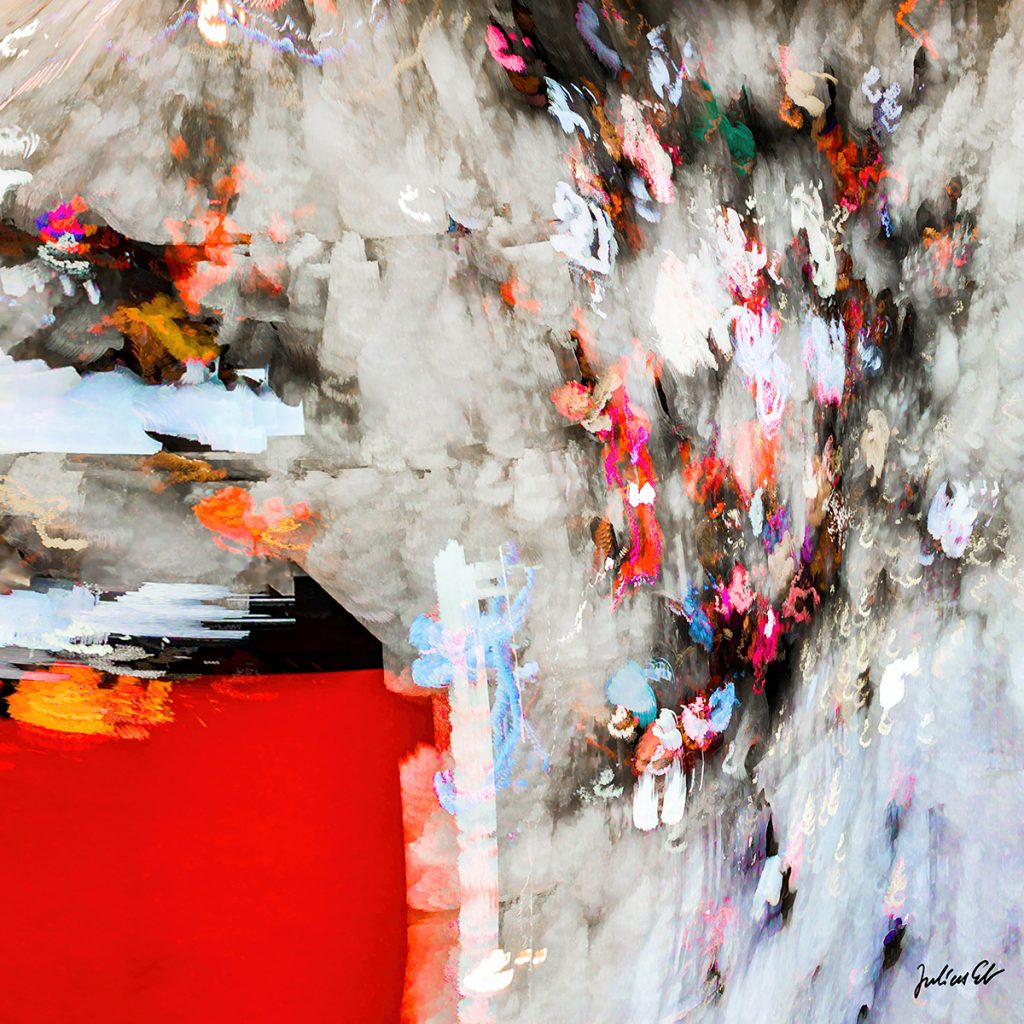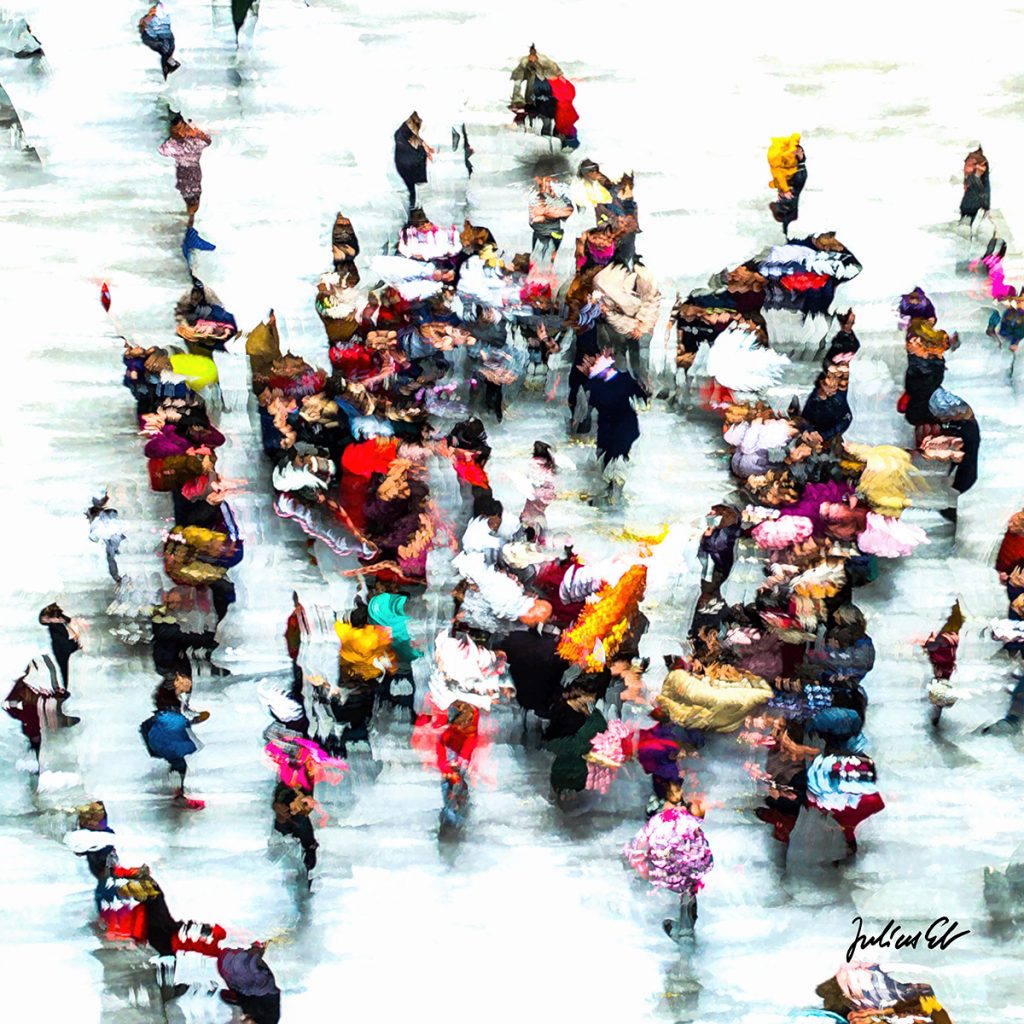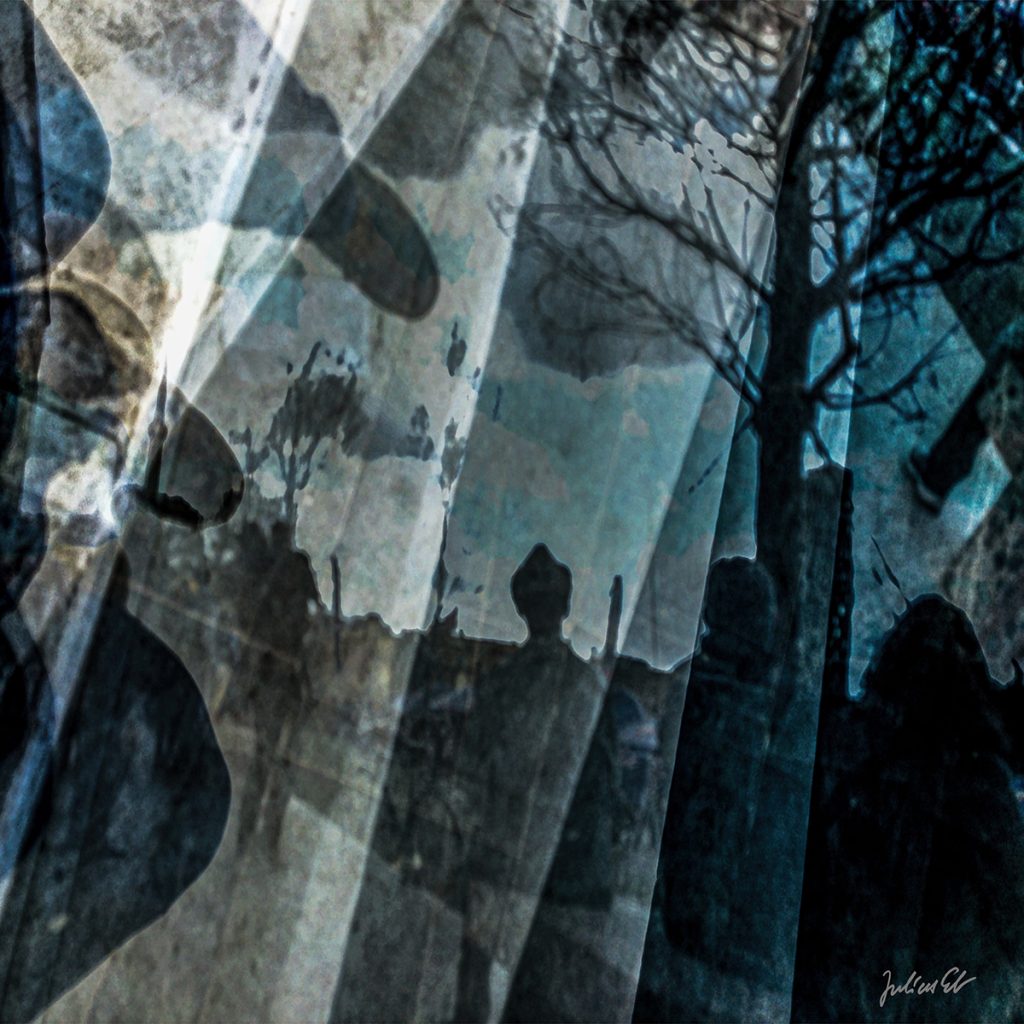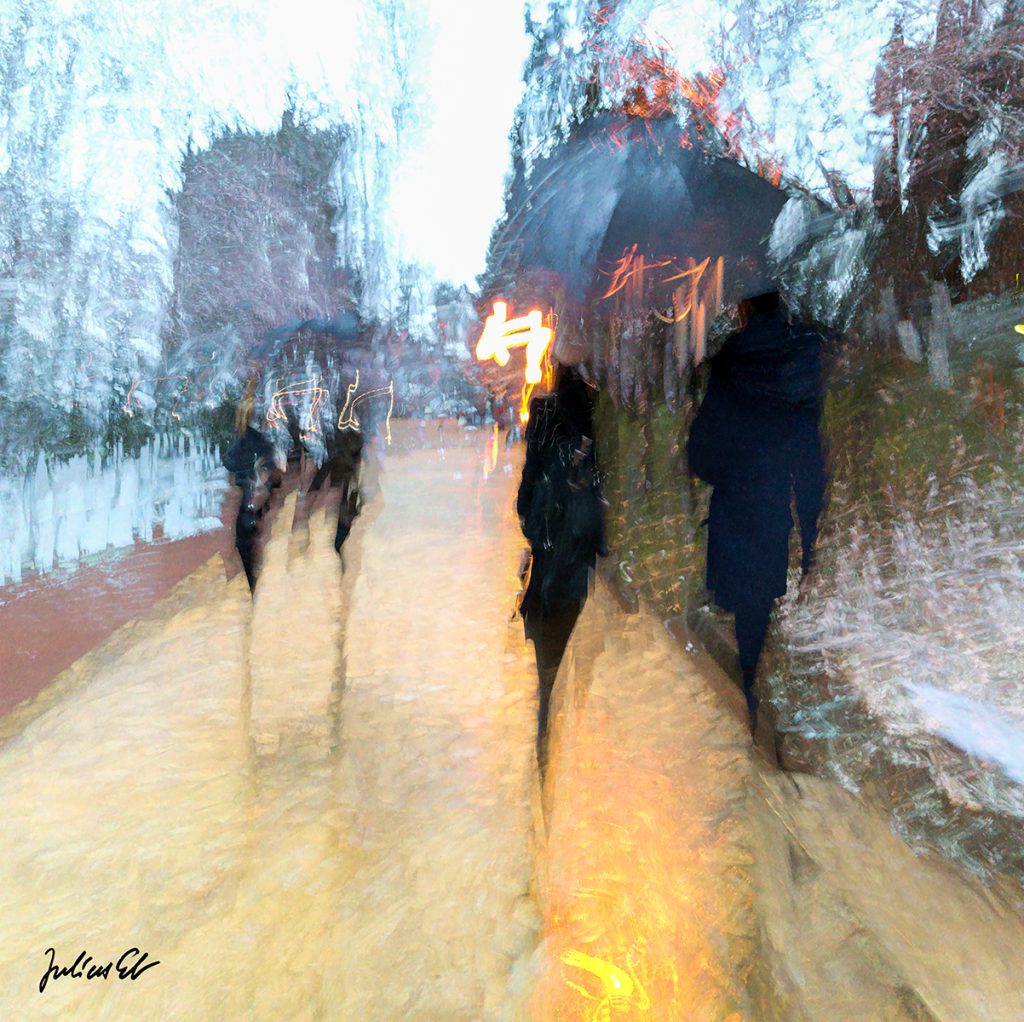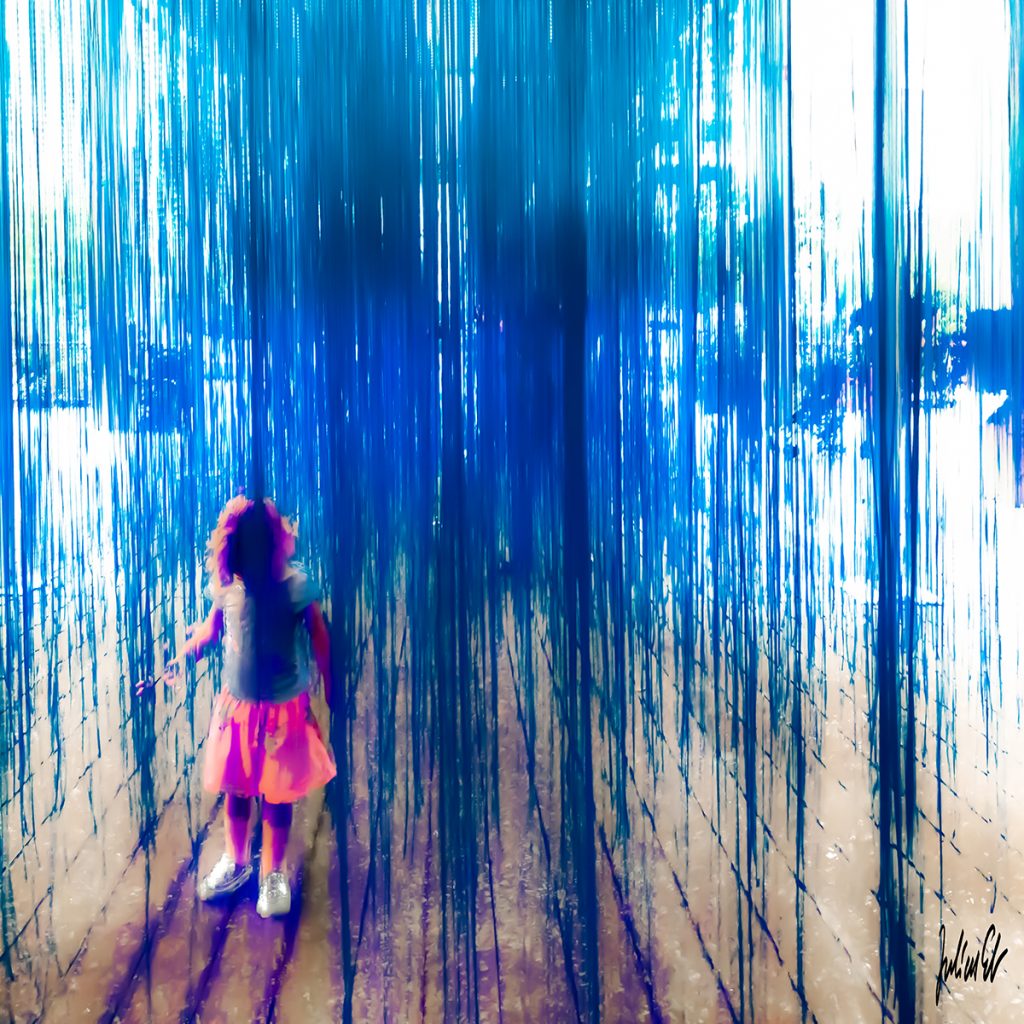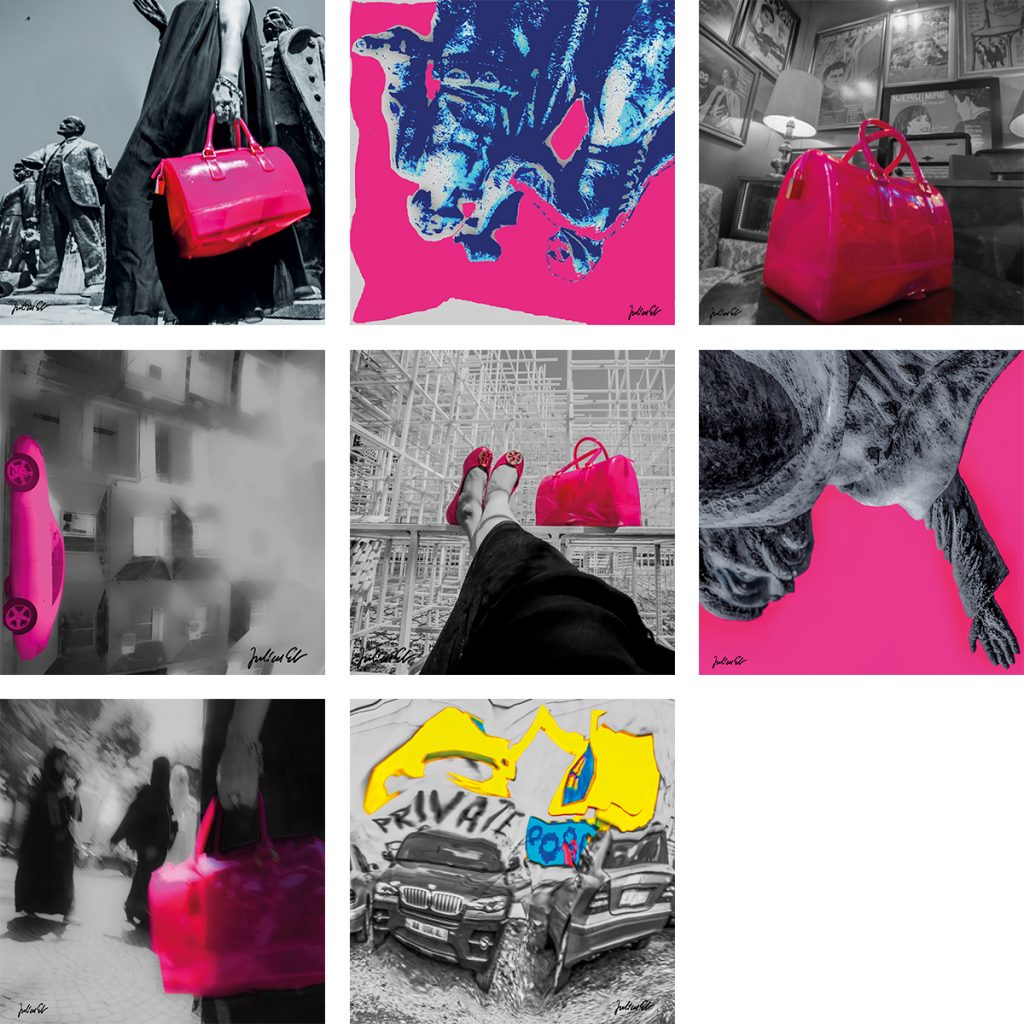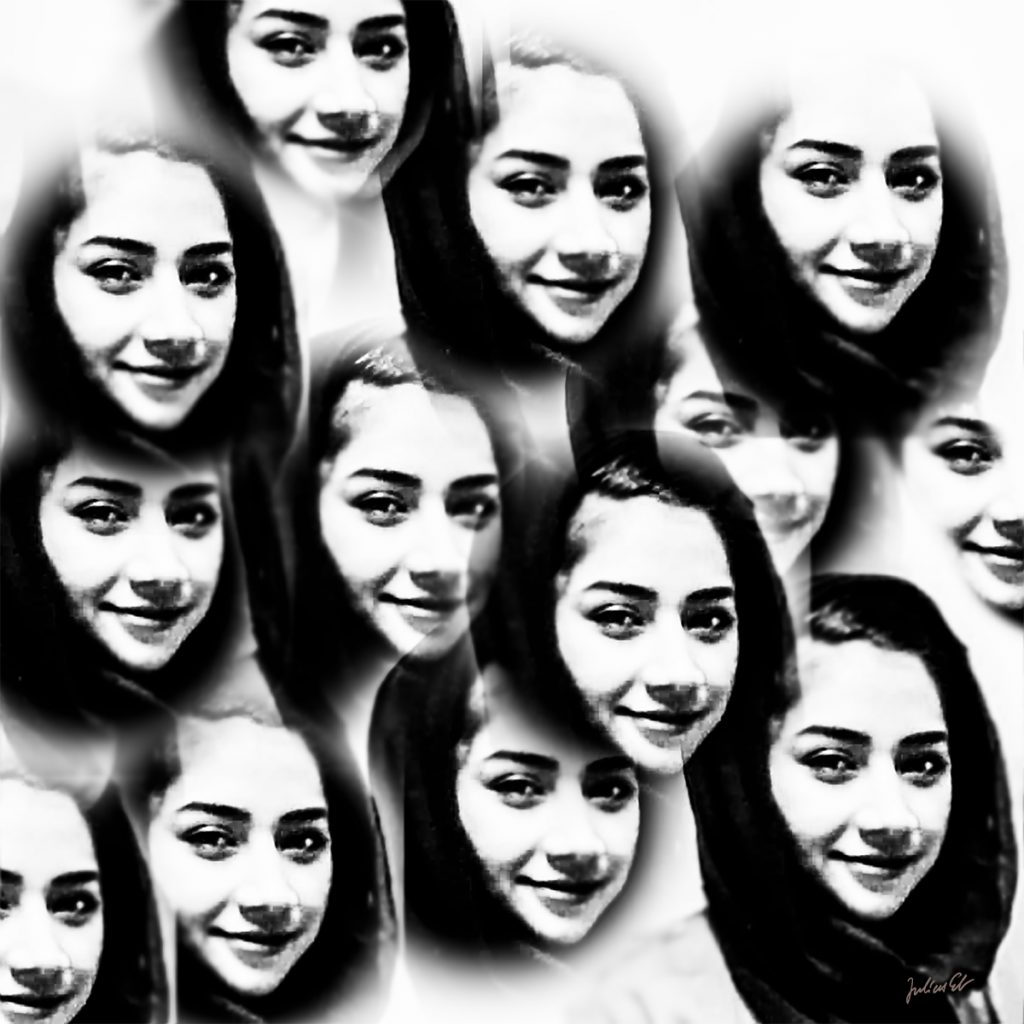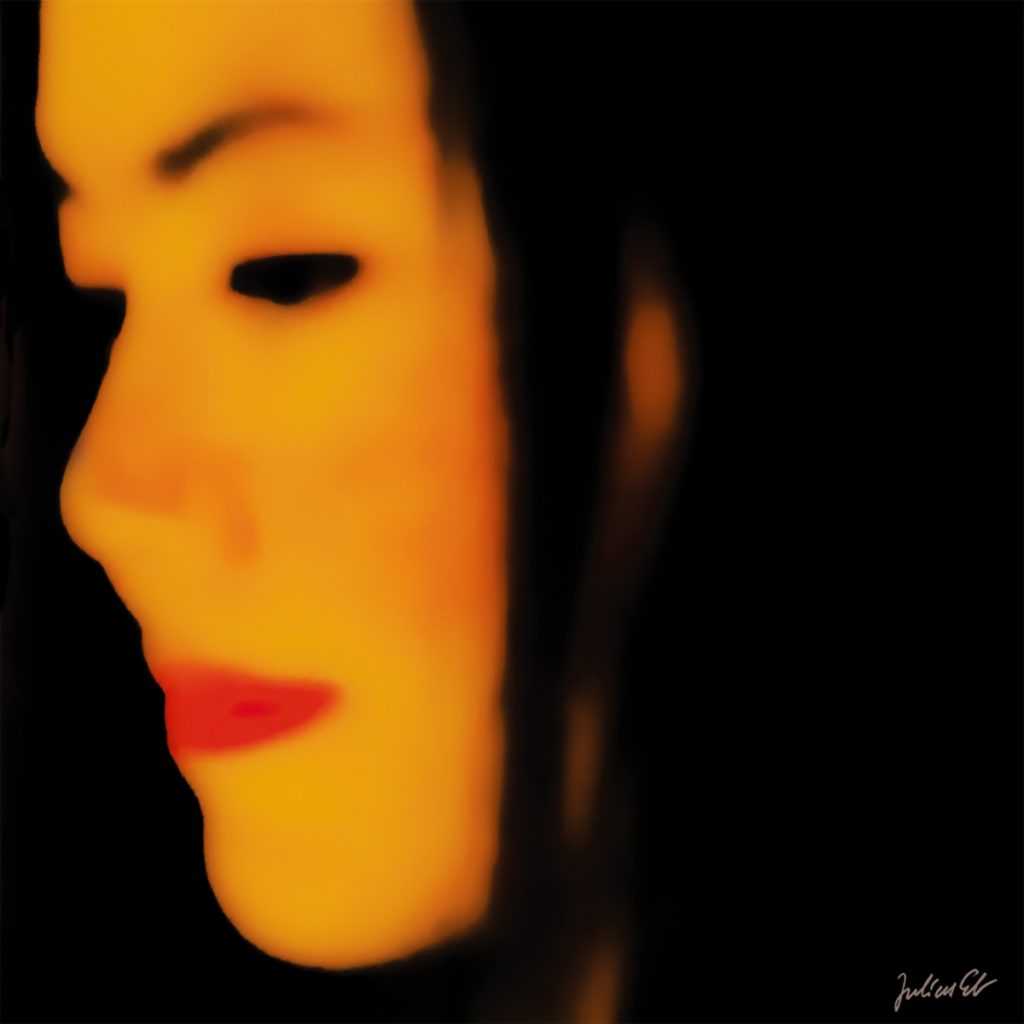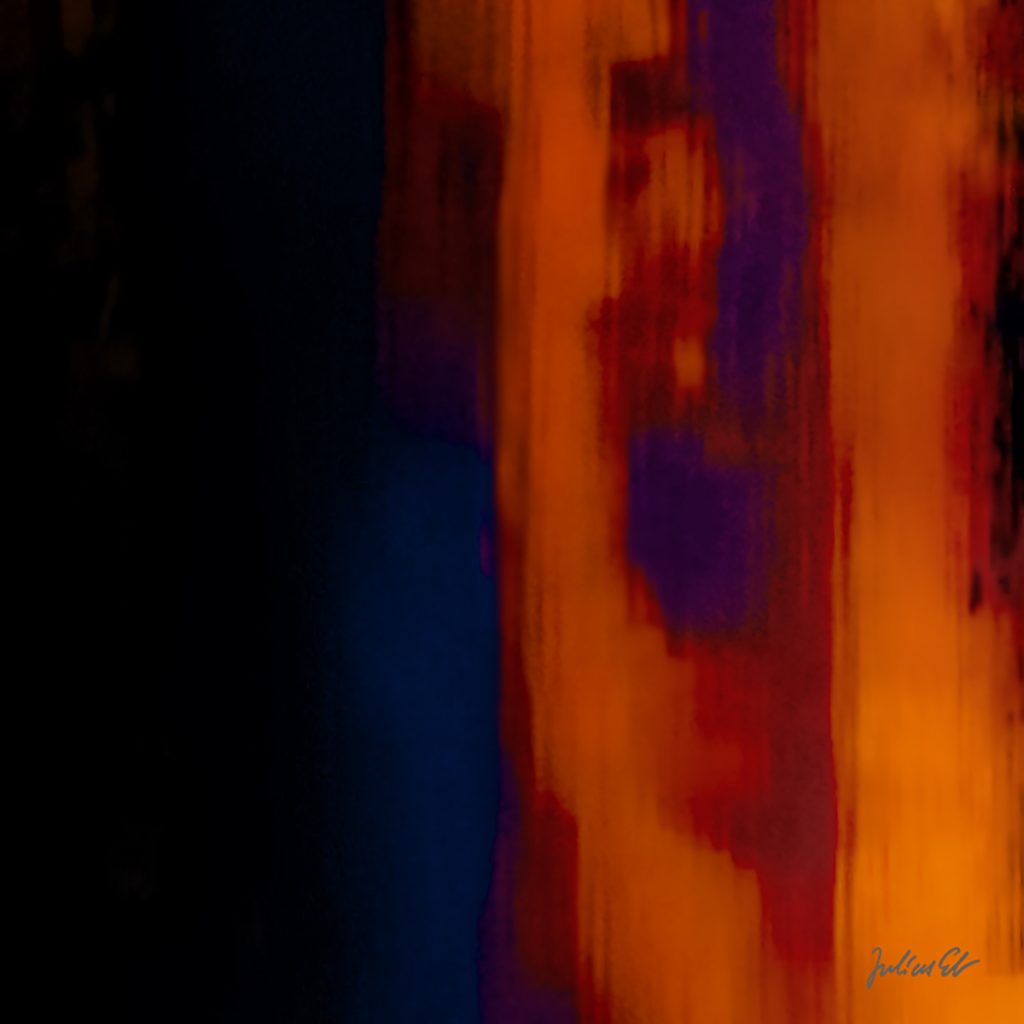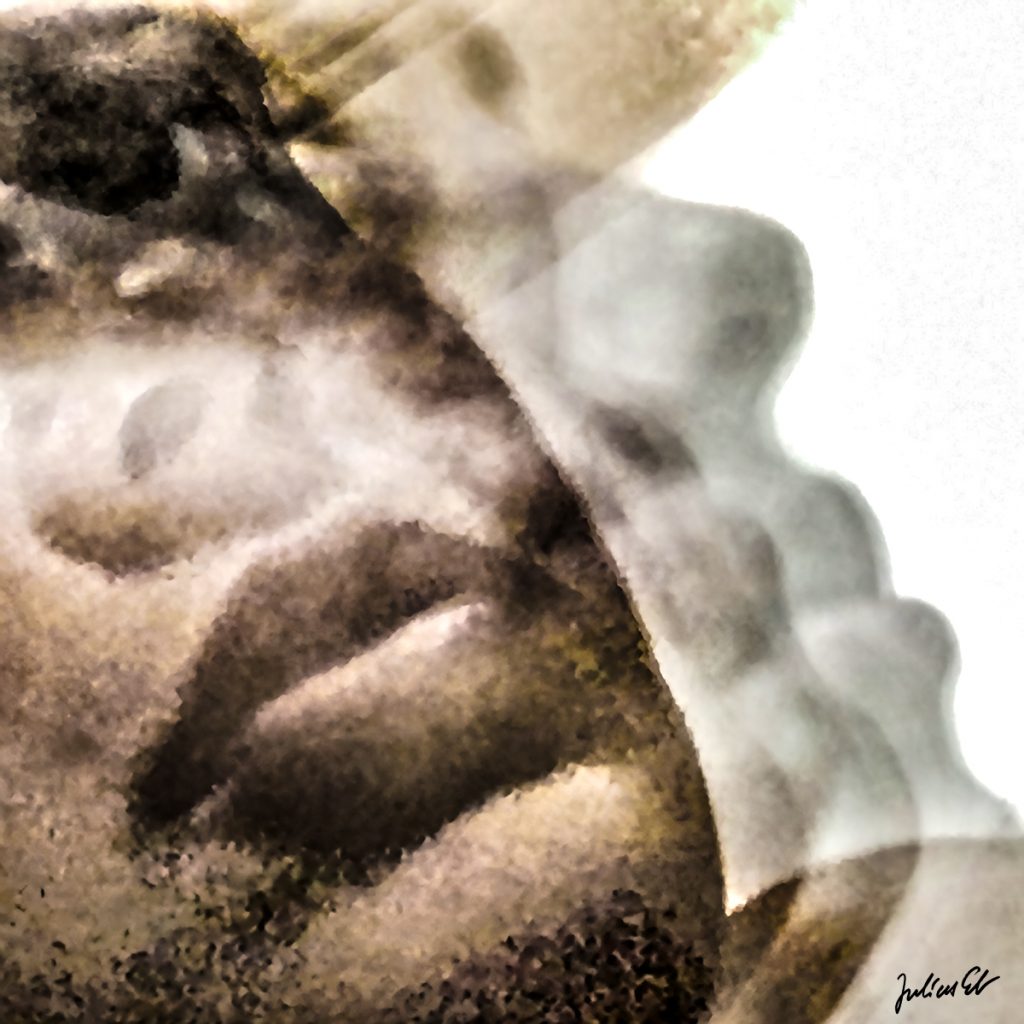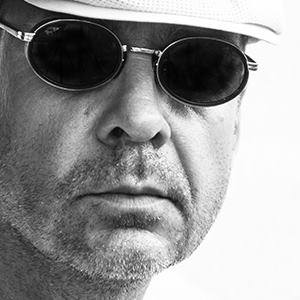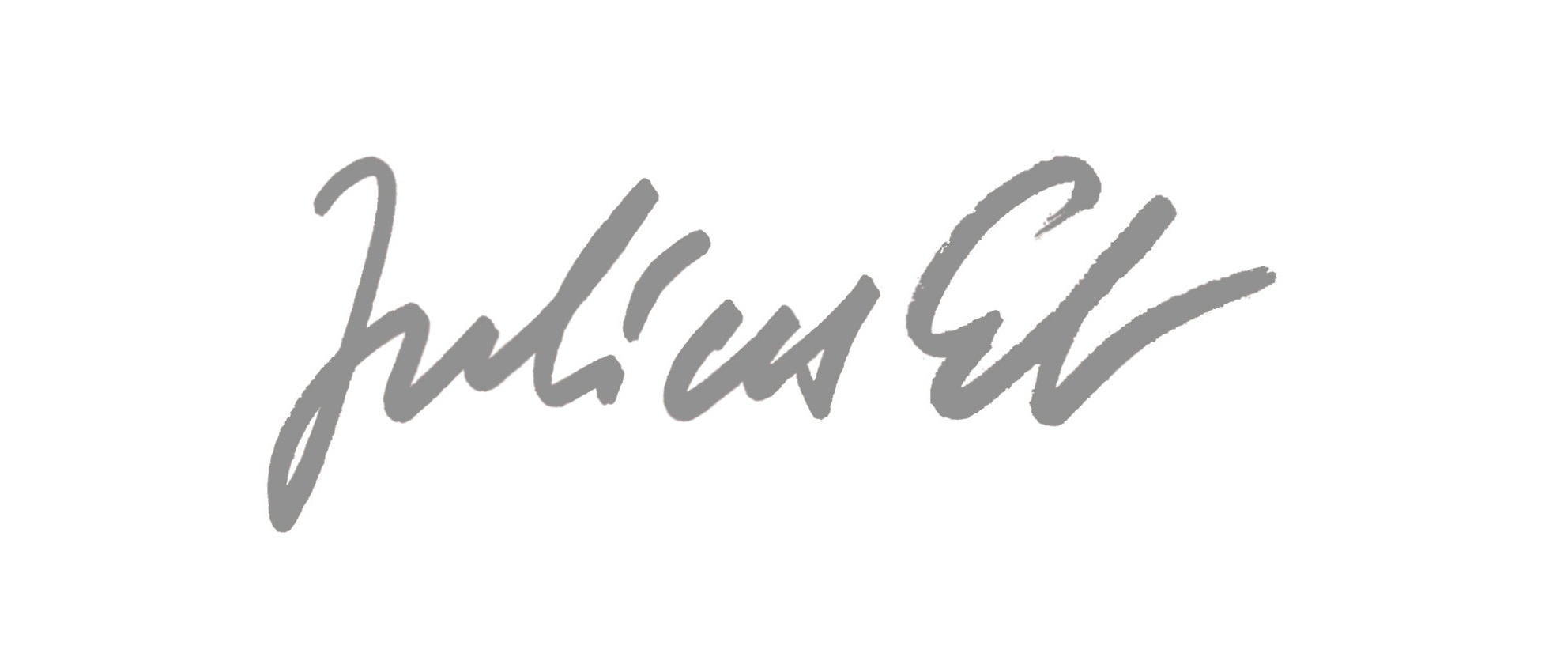
Seeing the World Differently
Contemporary Photography
4 Seconds, Experimental Photography
Featured Project:
Installation Pink
“Installation Pink” is a centerpiece of Julius Eb’s project “Gjenerata A” (Generation A). It was shown in exhibitions at the National Gallery of Arts, Tirana, and the National History Museum Albania. It’s a reflection of the history, culture, and traditions of Albania.
Questions to Eb
How would you summarize your art in one sentence?
An exploration of “Self” and other obscure subjects.
Why do most works don’t look like photographs?
All works are based on photographs. The difference is how the camera is used: exposure, motions, focus, etc. In addition, works are often digitally enhanced to achieve the desired result.
Shop
Most works are available on demand and will be produced according to your requirements.
Some pieces are ready to ship.
Featured
Abandoned
She was a young woman in Kabul. She was full of dreams and hope. She wanted to become a human rights lawyer and an activist for women’s rights and equality. Her life as she had imagined it came to an end on August 15th. Her incredible smile will never be the same.
All proceeds will benefit Afghani women who fled with little to nothing to face an uncertain future.
Testimonials
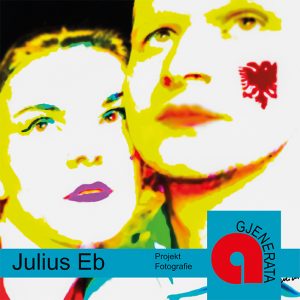
“Eb’s photographs take on a parable-like character through the many intentional interventions in both structure and form. Just like the timeline depicted, the nature of his photographs thrusts one genre against the other, transforming itself in the process. …”
ARTAN SHABANI, DIRECTOR NATIONAL GALLERY OF ARTS, TIRANA, ALBANIA
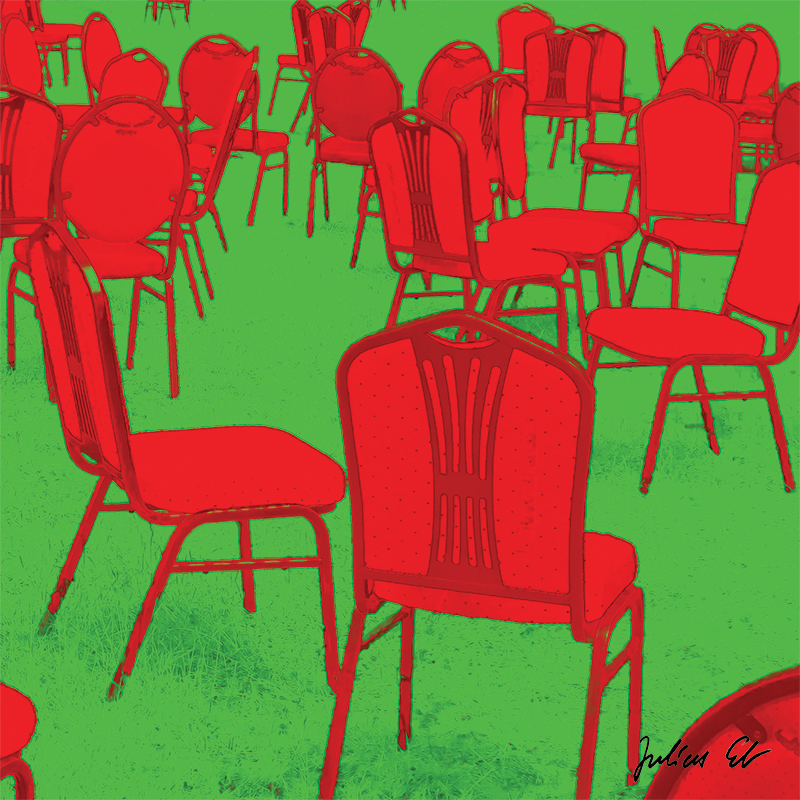
“… Appealing combination of abstract and representational along with strong compositions …”
MARISA PASCUCCI, CURATOR BOCA RATON MUSEUM OF ARTS, USA
In the realm of visual storytelling, Julius Eb transcends the boundaries of conventional photography, inviting viewers into a realm where meaning, inspiration, and provocation converge. His artistic journey unfolds as a distinctive departure from the ordinary, where details are distilled, and colors resonate in symphonic vibrancy or serene duotones.
A maestro in translating contemporary photography into the evocative realm of Abstract Realism, Eb’s recent exploration into long exposure photography elevates the ordinary, condensing moments into singular, profound images that encapsulate the essence of up to four seconds.
With a rich background in journalism, strategic communication, and photography, Eb’s artistic narrative is fundamentally about storytelling. For each project, he meticulously crafts a visual language that serves as a unique vessel for the narratives he seeks to convey.
Originating from Germany, Eb’s professional journey has taken him to places rarely found on holiday itineraries: Kosovo, Myanmar, Sudan, Nigeria, Nepal, Afghanistan, Albania, and more. These diverse locales, their cultures, and, most significantly, their people become the wellspring of inspiration for Eb’s work. While his subject matter spans a wide spectrum, Eb’s primary focus lies in capturing the intricacies of human life and the societies that shape it.
This website stands as a curated showcase, offering a glimpse into Julius Eb’s captivating body of work—an exploration of the extraordinary within the ordinary, a testament to the diverse tapestry of the human experience, and an invitation to immerse oneself in the rich narratives woven through his lens.
